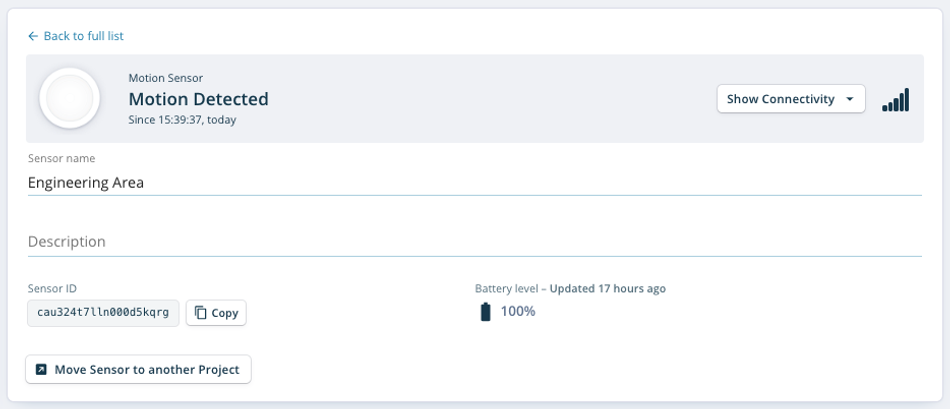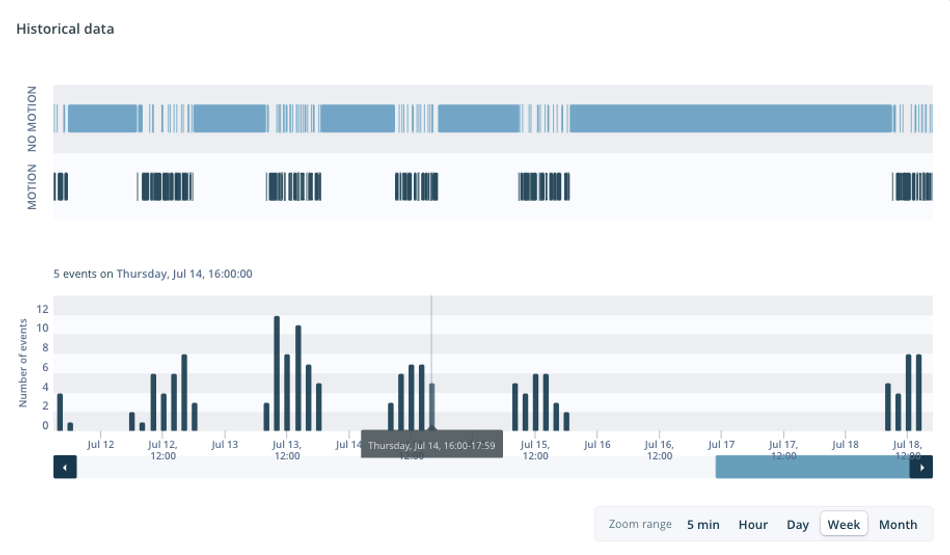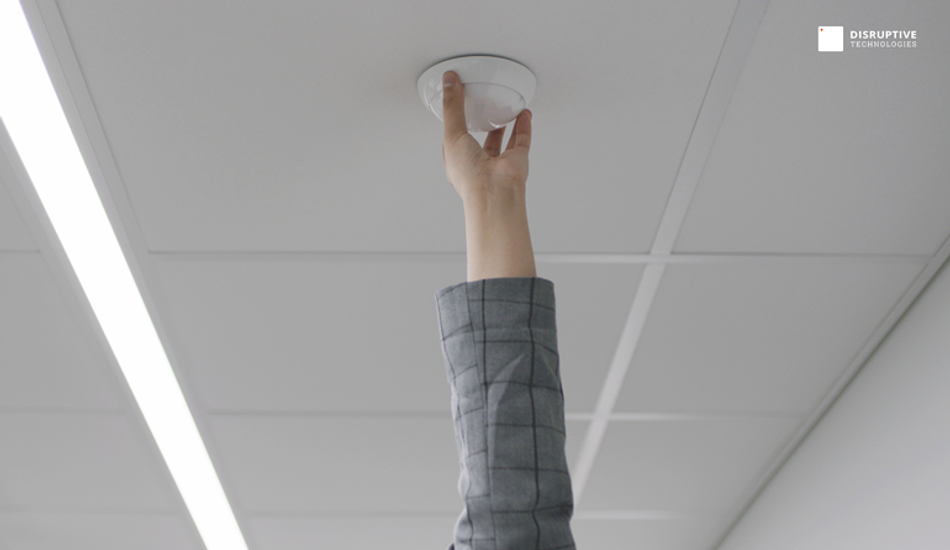What is a Motion Sensor and How Does it Work
A motion sensor or passive infrared (PIR) sensor is an electronic device that detects the movement of an object, anywhere within its field of view, by measuring the infrared (IR) light emitted from, or reflected by, that object.
What is a Motion Sensor?
A motion sensor or passive infrared (PIR) sensor is an electronic device that detects the movement of an object, anywhere within its field of view, by measuring the infrared (IR) light emitted from, or reflected by, that object.
Motion sensors detect the presence of people in a room and are usually used to understand where and when the space in a building is used.
Equipped with these insights, building and workplace managers can understand and predict space utilization inside buildings. They can also adjust heating, cooling, and other services accordingly to save energy and optimize building use.
How does a Motion Sensor work?
Motion sensors typically detect movement using a pyroelectric sensor, a device that has two photoactive diode areas, to convert infrared light emanating from an object into an electrical charge.
With a pair of pyroelectric sensors located next to each other, any changes in the signal differential between the two sensors (caused, for example, by a person entering a room) will cause the motion sensor itself to activate.
This physical design, with a total of four photoactive diode areas, minimizes the number of possible false alarms that can be generated and improves both the accuracy and performance of the device.
State-of-the-art motion sensors provide support for internet connectivity and can be flexibly integrated into the Internet of Things (IoT) software. This facilitates the integration of occupancy measurements with the output of other sensors (e.g. temperature sensors) and boosts building intelligence and management.
The Disruptive Technologies Wireless Motion Sensor
Our customers deploy our sensors to manage their buildings and offices. Beyond desk occupancy data, there is a need to collect and use room occupancy data for buildings, meeting rooms, and other office areas as part of Smart Building management initiatives.
We make use of quad-element technology for our recently launched compact Wireless Motion Sensor. The Wireless Motion Sensor is usually mounted on the ceiling and has a detection range of up to 14 meters (46 feet) with a 360° field of view.
The Wireless Motion Sensor builds on DT’s core, market-leading sensor features, including:
- Long wireless range:
- 100 m (330 ft) in a typical indoor environment
- 2 km (6600 ft) line-of-sight
- 10-year battery life (using two replaceable AA batteries)
- Full compatibility with the Cloud Connector, which securely relays monitored data, using SecureDataShot™ technology, into the Cloud for data processing
What are the benefits of using a Motion Sensor?
Motion sensors have traditionally been used, and integrated into, either automatic lighting solutions or alarm systems.
However, as previously mentioned, DT has received some requests from its customers for the collection and use of occupancy data from rooms or buildings.

Motion Sensors and Room Occupancy
As a result of changes in working patterns and increasing real estate prices, measuring room occupancy is becoming a critical requirement for many organizations. The effects of measuring room occupancy can be split into three main categories:
- Efficient resource allocation
- Which offices or locations are over/underutilized?
- Removing the need to physically check a room for occupation or not
- Comfort for tenants and workers
- Optimizing space design for employees based on actual occupancy
- Minimizing the time spent searching for available spaces while avoiding double bookings.
- Are meeting rooms being booked and not used or being reserved for too long?
- Cost savings
- Are 5 meeting rooms needed?
- Should investment be made in a new co-working space?
Placing Wireless Motion Sensors in all relevant locations will enable a company to have real-time, up-to-date, and accurate data about the occupancy of those areas.
With this information, an organization can make adjustments to both the actual space that they have and the way that it is used, both in the short term and in the longer term. The benefits of having this data therefore include:
- Maximizing space utilization
- Improving employee efficiency by eliminating their time wastage when looking for an available room
- Removing employee frustration about lack of available office space or meeting rooms
- Saving costs by eliminating underused areas
Motion Sensors and Room Occupancy
Data from the Wireless Motion Sensors can be analyzed to track how frequently restrooms, desks, and meeting rooms are used and to then determine if and when cleaning is required.
Using information collected from the sensors an organization can identify how many visits to a specific location trigger a need for cleaning.
As a result cleaning schedules can be tailored appropriately to deliver the following benefits:
- reduce labor costs by eliminating unnecessary cleaning
- repurpose cleaners to perform other vital jobs
- save energy by not using lighting or equipment when cleaning unnecessarily
- provide accurate data for measuring performance against cleaning contracts

Bottomline
The Wireless Motion Sensor is an easy-to-install device that compliments and operates with other sensor types from DT.
Using state-of-the-art technology the device can provide accurate and up-to-date information about space utilization in any office location.
This information is critical for Facilities Management to enable them to maximize room utilization. Employee frustrations from not being able to locate a free room or meeting space are minimized and costs can be saved.
Collecting data over time also allows an organization to understand usage patterns and determine correct cleaning schedules. This leads to improved cleaning quality, efficiency, and employee productivity.
With the launch of the Wireless Motion Sensor Disruptive Technologies now has a comprehensive set of sensors, all using the Cloud Connector and a common data store. These cover all common customer requirements for data monitoring and collection within their work environment.



